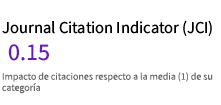Com-position of Architectural Metaphors, Empty Pareidolia. House of Music of Hungary in Budapest
DOI:
https://doi.org/10.24310/ba.46.2024.18998Keywords:
House of Music of Hungary, Fujimoto Architects, Pareidolia, Statute of Architecture, Architectural CompositionAbstract
The opening of the House of Hungarian Music building (Sou Fujimoto Architects), not only provides Budapest with a unique work, but also provides the current architectural landscape with a particularly fertile speculation for diagnosing the present in both cultural and political terms. This building confronts the keys to modernity that are still in place, even though they were thought to be left behind, challenging the so-called Statute of Architecture. Demanding a greater commitment from those who practice a banal hermeneutic, we will argue that a simple formal comparison is further proof of the shortcomings of architectural criticism, it being unacceptable that this work should fall short of its greatest achievement: successfully re-centring current design clauses within a generalised dispersion and uncertainty. Architectural works that reveal their time are rare, and the risks taken in Fujimoto’s projects provide, perhaps not certainties, but reflective milestones.
Downloads
Metrics
Publication Facts
Reviewer profiles N/A
Author statements
Indexed in
-
—
- Academic society
- N/A
- Publisher
- Universidad de Málaga.
References
DE BALZAC, Honoré (2021), Ilusiones perdidas, Ediciones AKAL, Madrid.
CADAVA, Emilio (2001), «“Lapsus Imaginis”: The Image in Ruins», October, n.º 96, pp. 35-60, <https://doi.org/10.2307/779116>.
CECILIA, F. M. and LEVENE, R. C. (2010), «Sou Fujimoto: 2003-2010: teoría e intuición, marco y experiencia», El Croquis editorial, Madrid.
FOCILLON, Henri (1983 [1943]), La vida de las formas y Elogio de la mano, Xarait, Madrid.
FUJIMOTO, So, ITO, T. and WORRALL, J. (2009), 2G 50 Sou Fujimoto International Architectural Review: Sou Fujimoto. G. Gili.
KRAUSS, Rosalind E. (1994), «The Grid, the /Cloud/, and the Detail», in MERTINS, Detlef (ed.), The presence of Mies, Princeton Architectural Press, Madison, pp. 133-148.
NANCY, Jean Luc (2003), El sentido del mundo, La Marca Editora, Buenos Aires.
NOVAK, Benjamin (2022), «A Music Museum Opens in the Heart of Hungary’s Culture Wars», The New York Times, February 2nd <https://www.nytimes.com/2022/02/02/arts/music/house-of-music budapest-hungary.html> (Retrieved on 30/06/2022).
PAVLOVA, Marina A. (2020), «Face pareidolia in schizophrenia», Schizophrenia Research, 218, pp. 138-145 <https://doi.org/10.1016/J.SCHRES.2020.01.019>.
ROLF, Rebecca, SOKOLOV, Alexander N., RATTAY, Tim W., FALLGATTER, Andreas J. and PAVLOVA, Marina A. (2020), «Face pareidolia in schizophrenia», Schizophrenia Research, n.º 218, pp. 138-145 <https://doi.org/10.1016/J.SCHRES.2020.01.019>.
Published
How to Cite
Issue
Section
License
Copyright (c) 2024 Carlos Tapia Martín

This work is licensed under a Creative Commons Attribution-NonCommercial-ShareAlike 4.0 International License.
Todos los contenidos publicados en la revista Boletín de Arte están sujetos a la licencia Creative Commons Reconocimento-NoComercia-Compartirigual 4.0 cuyo texto completo puede consultar en <http://creativecommons.org/licenses/by-nc-sa/4.0>

Los/as autores/as cuyas contribuciones sean aceptadas para su publicación en esta revista conservarán el derecho no exclusivo de utilizar sus contribuciones con fines académicos, de investigación y educativos, incluyendo el auto-archivo o depósito en repositorios de acceso abierto de cualquier tipo.
La edición electrónica de esta revista esta editada por la Editorial de la Universidad de Málaga (UmaEditorial), siendo necesario citar la procedencia en cualquier reproducción parcial o total.












4.png)
